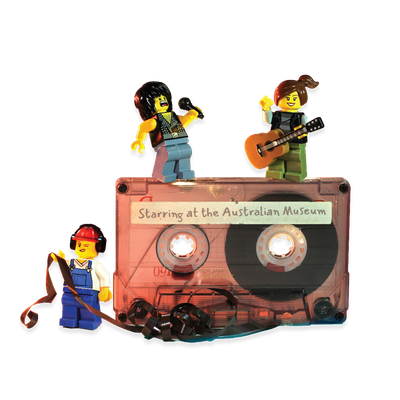Your search returned 13 results
By Page Type
By Tag
- All
- fish (966)
- blog (696)
- fishes of sydney harbour (401)
- First Nations (297)
- Blog (236)
- AMRI (169)
- archives (164)
- Eureka Prizes (145)
- Aboriginal and Torres Strait Islander (135)
- insect (126)
- Ichthyology (124)
- geoscience (109)
- minerals (102)
- climate change (98)
- podcast (94)
- Fish (91)
- Anthropology (89)
- International collections (80)
- Minerals Gallery (78)
- wildlife of sydney (78)
- Labridae (77)
- frog (73)
- gemstone (70)
- photography (65)
- history (63)
- Mollusca (60)
- gem (59)
- staff (59)
- Birds (56)
- Gems (56)
- Indonesia (56)
- education (55)
- shark (55)
- AMplify (54)
- people (53)
- earth sciences (50)
- past exhibitions (50)
- exhibition (49)
- Gobiidae (48)
- sustainability (46)
- Pomacentridae (45)
- Serranidae (44)
- lifelong learning (42)
- science (42)
- Earth and Environmental Science (41)
- Syngnathidae (41)
- Ancient Egypt (40)
- Bali (40)
- bird (40)
- dangerous australians (40)
-
Estuaries: mixing places
https://australian.museum/learn/first-nations/burra/estuaries-mixing-places/First Nations people recognise Estuaries as mixing places of abundant foods, resources for making tools and important gathering places.
-
Starting where you are: First Nations non-linear storytelling
https://australian.museum/learn/first-nations/burra/non-linear-stories/For First Nations people, stories and lifecycles don’t need to have a beginning and an ending because they happen continuously in circles and patterns.
-
Who’s who, Bangu: how to tell the difference between Flying-fox Bats
https://australian.museum/learn/first-nations/burra/difference-between-flying-fox-bats/Learn how to tell our nectivorous (nectar-eating) and frugivorous (fruit-eating) Flying-fox Bangu apart.
-
Whale poo and climate change
https://australian.museum/learn/first-nations/burra/whale-poo-climate-change/Learn how the connection between whales and climate change reach far and wide across Country.
-
Listening to Country
https://australian.museum/learn/first-nations/burra/listening-to-country/We are all connected to Country so it is important to understand how everything works and notice when patterns change.
-
Little Terns: caring for Country and each other
https://australian.museum/learn/first-nations/burra/little-terns-caring-for-country/Little Terns teach us the importance of supporting each other and caring for Country.
-
Bangu: Big Bats and Little Bats
https://australian.museum/learn/first-nations/burra/big-bats-little-bats/In Dhurga, one of many languages spoken by the First Nations Yuin people of the NSW South Coast, Bangu is the name for Bat.
-
Who’s who, Bangu: getting to know Microbats
https://australian.museum/learn/first-nations/burra/getting-to-know-microbats/Bats are the second biggest group of mammals in the world and scientists are still finding new species of little microbats today.
-
Climate change: how can I care for Country?
https://australian.museum/learn/first-nations/burra/climate-change-caring-for-country/Learn about some simple actions we can take to help support Country through climate change.
-
Ocean Currents
https://australian.museum/learn/first-nations/burra/ocean-currents/Our Oceans are asking us to care about the animals who are eating, breathing and becoming sick from these pollutants before it’s too late.
-
Discover more
2025 Australian Geographic Nature Photographer of the Year
Special exhibition
Now open -
Discover more
Unfinished Business
Special exhibition
Opens 1 November -
Discover more
Wansolmoana
Permanent exhibition
Open daily -
Find out more
Burra
Permanent kids learning space
10am - 4.30pm![]()
-
Discover more
Minerals
Permanent exhibition
Open daily![]()




